Inside Gabriela Hearst’s upstate New York retreat

Roula Khalaf, Editor of the FT, selects her favourite stories in this weekly newsletter.
Gabriela Hearst has the look of Villanelle, but with a killer sense of humour. “When I order an Uber XL, my husband laughs and asks me who I think I am – a Rockefeller?!” The woman behind what has rapidly become one of America’s most successful luxury labels is no society princess. Hearst – née Perezutti – is a cashmere-clad gaucho from Uruguay, with a background in horse handling and riding and a love of the great outdoors. Which is what brought her, Austin (grandson of William Randolph Hearst and her husband since 2013), and their children to this house in upstate New York.
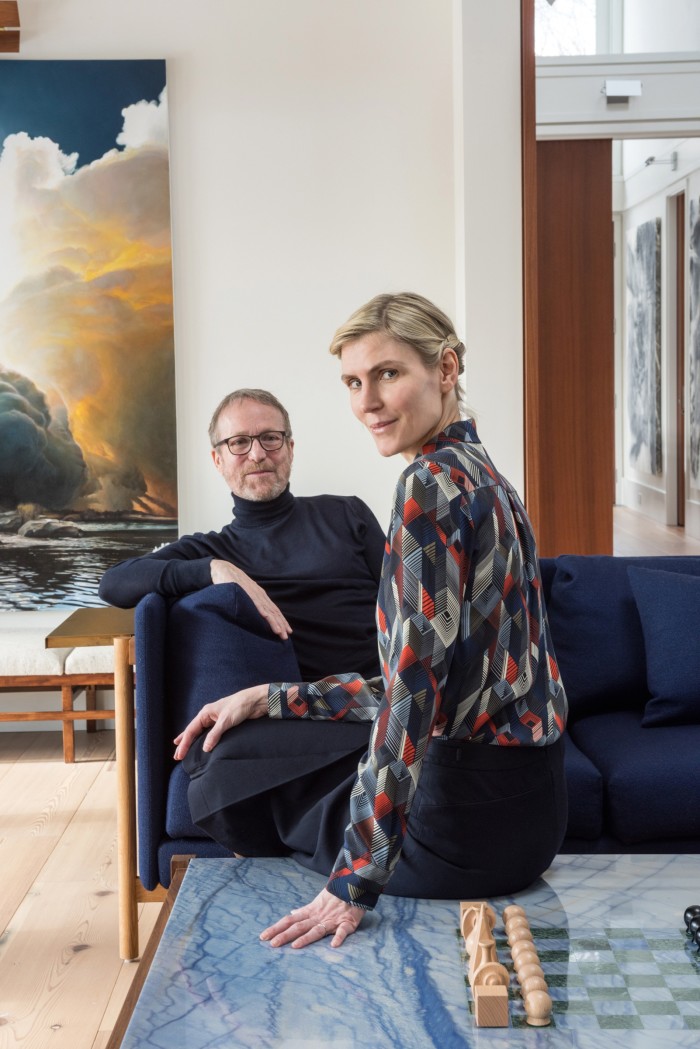
They have long had a home in the West Village, but now spend as many weekends as possible at the property they bought a couple of years ago, a short drive from Garrison on the Hudson River. When they found the lake house, an hour’s drive from Manhattan, it was unfinished. It had been part-built by another couple as their dream retirement home, but after a change of heart they sold it to the Hearsts who reconfigured some of the rooms, developed a basement with a Japanese-style bathroom and TV room, and made it their own. “You know, I grew up on a ranch until I was about five,” says Gabriela. “I went to school in the city in Montevideo, but I still spent every summer on the ranch until I rebelled and went to Australia. My teenage years were so different from life now – I grew up in Uruguay before globalisation. We didn’t have cable TV until I was 16 and McDonald’s didn’t exist. Austin grew up on Fifth Avenue. But actually it’s him who wants to get into nature all the time. This is his temple.”
When I arrive at the Hearsts’ lakeside retreat, I find Austin in his overalls, loading up his quad bike with freshly chopped logs for the wood-burning stove in the lounge. Five-year-old Jack is tearing around the house screaming in delight that Gabriela is back from a long European trip, and their twin daughters Mia and Olivia, 12, are in the city with friends. “Jack loves it here,” says Gabriela. “There’s so much space and there’s a screening room in the basement for him to watch movies with Austin. It’s also a place for him to run around and connect with nature. I think it’s very important for children who grow up in cities to have that. You need to know where things come from.”
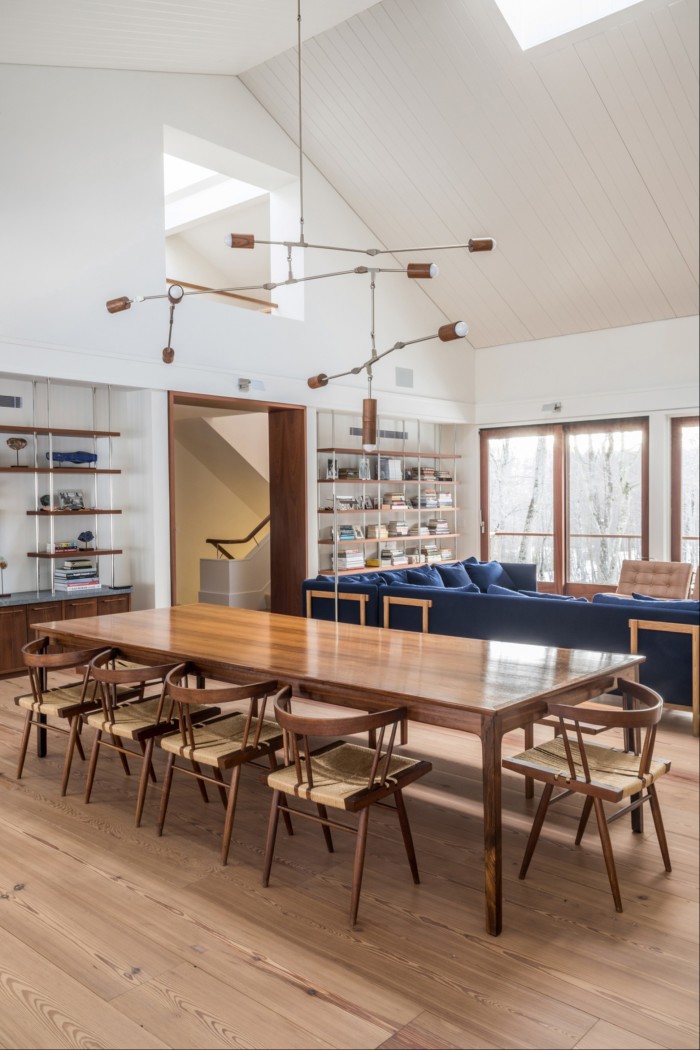
While the couple’s home in the Village is furnished with a mix of Hans Wegner and Matthew Hilton modern wooden chairs, Hermès lamps and inherited treasures from Hearst Castle on the West Coast, the upstate country house is simpler and more sprawling. Family life here revolves around a huge open-plan lounge, kitchen and dining room sandwiched between beautiful views on both sides. Sliding glass doors in the bedrooms open onto a long walkway and balcony looking out over the lake.
Apart from the couple’s art and a giant blue sofa by De La Espada – the Portugese design company responsible for the furniture in Hearst’s Manhattan boutique – almost everything is recycled or vintage. Some of the furniture was created by Michelle Smith using recycled wood and even the flooring is made from reclaimed wood. “The principle was the same as I have for my stores,” Hearst says. “If we are going to have a country home, why should nature suffer for it?” One exception is the spectacular new Lindsey Adelman lighting fixture in the main room that has its designer’s customary organic style, as if an autumnal tree had been sculpted from polished nickel, with cylindrical wooden buds housing the lights. “It is the same chandelier we have at home in the West Village,” Hearst explains. “I love Lindsey’s work. I like how she thinks, her starting point and how she works with materials. I think lights are difficult because they are usually pretty ugly, but she creates something beautiful.”
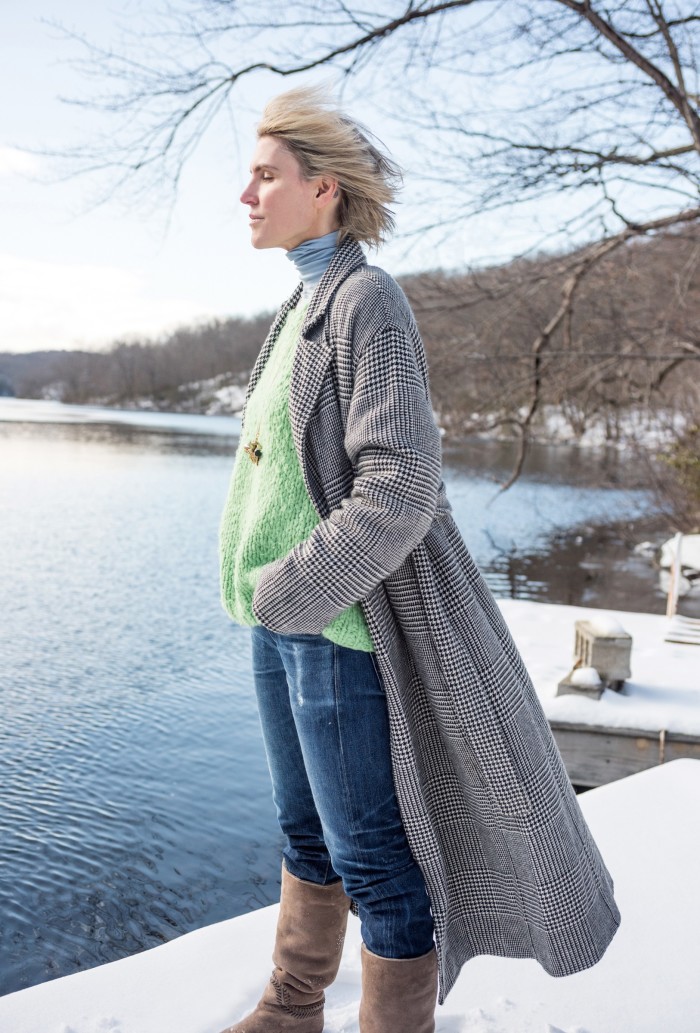
Hearst’s eco credentials are serious. Her first runway show in 2017 incorporated 30 per cent deadstock fabrics and her entire retail enterprise is plastic-free, using compostable hangers. Last September, she produced her first-ever carbon-neutral runway show, and aims to eliminate the use of all virgin materials in her production by 2022. Many of the textiles in the upstate house – including throws and blankets – are recycled and in her son Jack’s room are two fabulously grotesque armadillos knitted from scraps of old wool.
Despite the rambunctious tones in the house today, it is usually a place of total quiet. “There were certain things we really wanted from a house out of the city and this one had everything,” says Hearst. “Primarily, we wanted privacy and didn’t see this as somewhere to socialise, which is why The Hamptons was never an option. When we saw this place, and the lake it was on, we realised it was perfect.” That huge lake, which freezes in winter, is only accessible by three paths, each part of a private home in the woods, so the lake remains unpopulated and serene whatever the season.
Hearst’s favourite thing to do at the house is read. “I am currently halfway through Robert Macfarlane’s Underland, about the history and myths surrounding what is beneath the earth’s surface. It’s been really interesting to read it somewhere like this, surrounded by nature,” she says. “My mother is actually a Zen Buddhist and this is her favourite place anywhere. There’s so much disturbance in the world, so much bombardment. The thing I wanted most here was calm.”
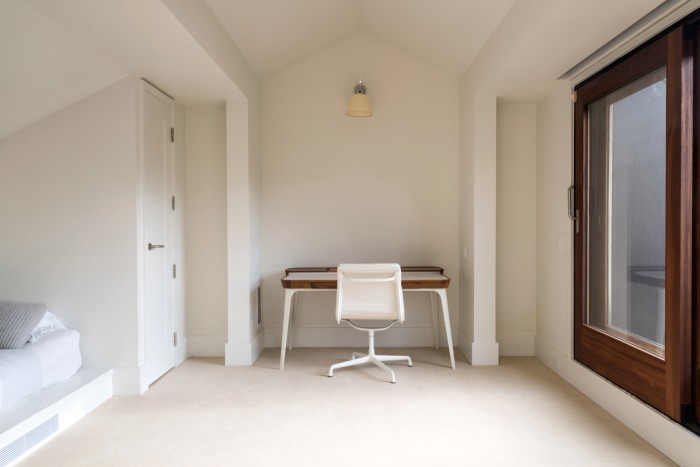
For times when the silent environment isn’t calm enough, Hearst has fashioned herself an inner sanctum – a small room upstairs with a white bed, white desk, white Herman Miller chair, white walls and nothing else – that is for her use only. “I call it my sanatorium,” she says. “No one is allowed in unless I invite them. It’s where I contemplate things. I go there to draw or write or read, but I never do work stuff. It’s about putting my mind into a different gear.”
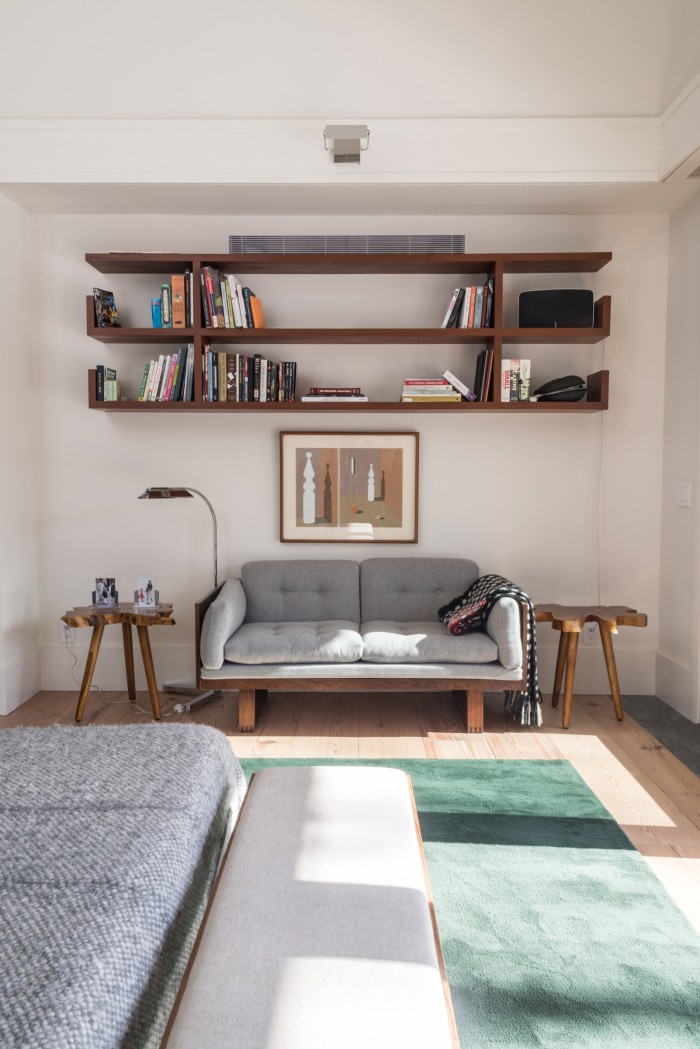
The family rarely entertains here, but Austin often barbecues – steak for Gabriela and a vegan substitute for himself. “He gave up meat recently,” she says. “But that’s not going to fly with me – I feel like my body needs red meat once a week and I eat only grass-fed organic beef – but it’s clear to me that we cannot feed the 11 billion people on the planet with meat, and it needs to be treated like a luxury.” Today, the kitchen is full of the distinctive pink paper bags from Sant Ambroeus – Hearst has brought lunch with her from the Italian restaurant in Manhattan – and she has clearly spent time honing her technique with the espresso maker. “I’m going to get this perfect,” she says, handing over a coffee with just the right amount of crema on the surface. “If fashion doesn’t work out, I can get a job as a barista. Also, I can’t drive, so if I am on my own here, I have to be independent and be able to make good coffee!”
Hearst style signatures
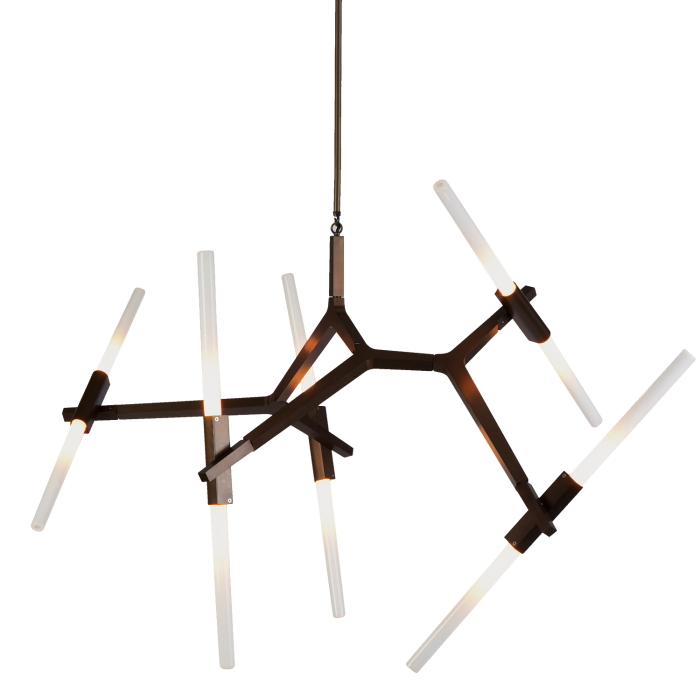
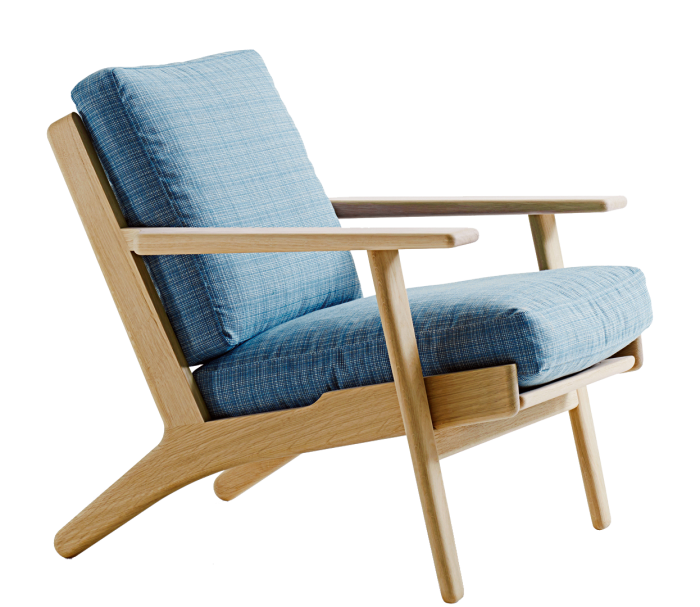
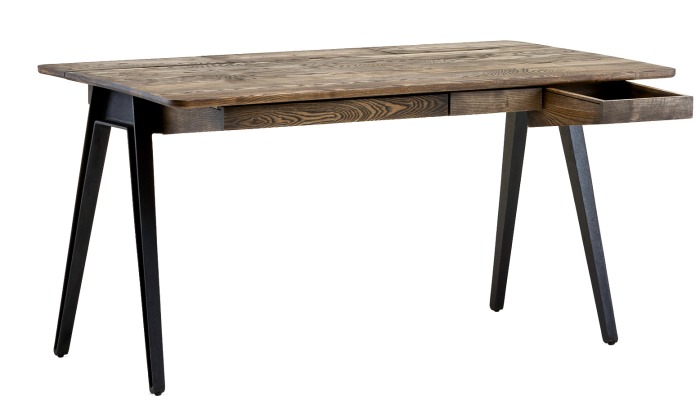

One of the original plans for the new house was to use it as a place to store her design archive, but that’s now been set up elsewhere and digitised. She keeps a wardrobe here though, “so all I do is grab a book and I am ready to go,” she says. Her upstate look is pretty much the same as her urban one. “I need outdoor shoes, but usually it’s just a cashmere jumper and some vintage jeans. I never plan to see anyone out here, so it’s all about comfort.” In the summer, she swims in the lake with Austin and in the depths of winter, they skate on it. “Compared to the city, it’s another world,” she says. “And it’s so quiet that I sleep infinitely better.”
There is a subtle midcentury-modern style to the house, accentuated by the vintage wooden lighting sconces, the stark pavilion style of the architecture and the restrained colour palette. The artwork, most notably a collection of muscular, graphic pieces by the late Uruguayan abstract artists José Pedro Costigliolo and María Freire, lends an air of 1950s chic. Halfway down the staircase stands a triptych of glass stele works by Brooklyn-based artist Dustin Yellin. Yellin is a close friend and his sculptures – transparent blocks in acrylic, resin and steel depicting a tableau reminiscent of Hieronymus Bosch, with boats sinking and men perishing as the result of environmental collapse – are distinctive indeed. “Dustin is behind the Pioneer Works arts centre in Red Hook, Brooklyn,” says Hearst. “Austin joined their board. All of the money from Dustin’s work goes into Pioneer Works. I really believe in his mission, mixing the two disciplines of science and art with some great programming – they have had [evolutionary biologist] Richard Dawkins and Gloria Steinem [the feminist and social-political activist] giving talks, as well as panel discussions on black holes. Dustin is a dreamer, working for humanity.”
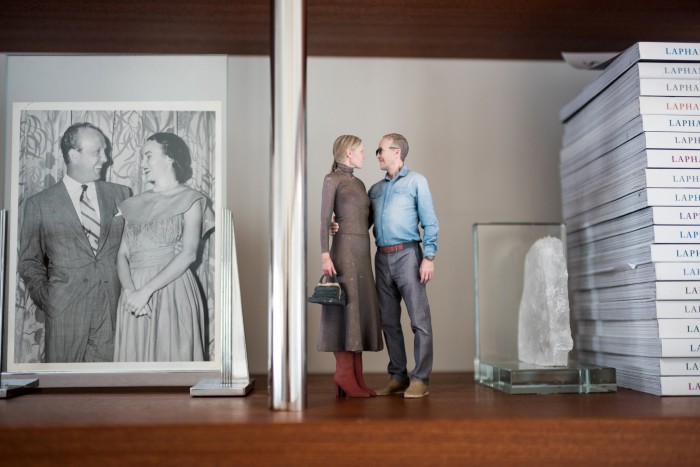
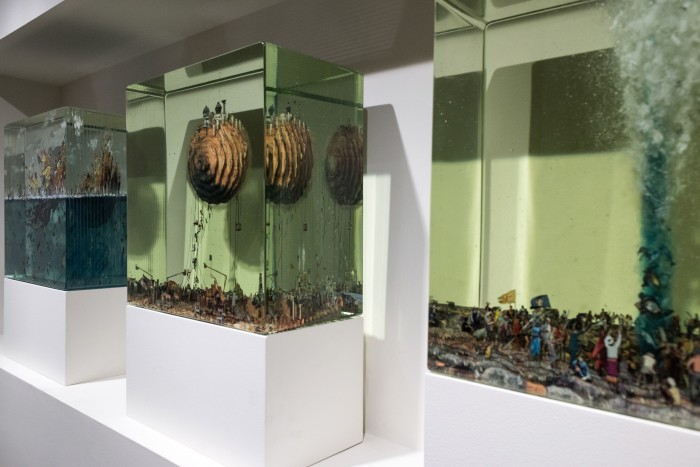
One of the most interesting artworks in the house is distinctly low brow, but brilliant in its way. On a bookshelf in the lounge, next to a framed black-and-white picture of Austin’s parents, stand a pair of 3D prints of Austin and Gabriela. Both couples are looking at their respective partners, but they are decades and styles apart – the black-and-white print is all smart tailoring and glamour grooming, while the Austin figurine finds him in a casual chambray shirt and Gabriela in a beige cashmere twinset and boots, clutching her Diana bag (its distinctive accordion shape named after Diana Ross). “We were passing a place in SoHo where they do 3D printing and we couldn’t resist,” she says. “Some people say it’s spooky. I think it’s funny.” It’s certainly a very modern portrait of a very modern American couple.
Comments